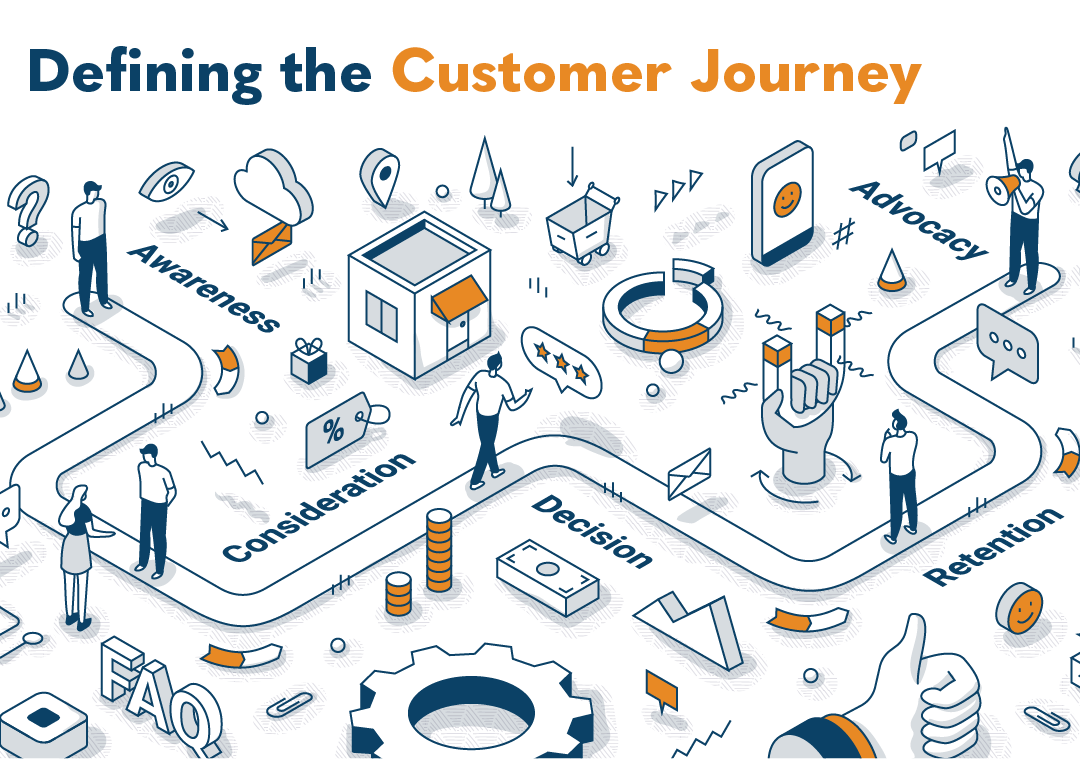4 Sales Trends to Watch in 2024

If sellers possessed crystal balls, they’d all be wildly successful. They’d know which clients to target, and which deals would close. They would also better prepare for change.
At Janek, we help many sales leaders plan and forecast. One thing we often hear is no one could have foreseen the pandemic. While no one predicted a global health emergency, sales trends did anticipate future needs. More than blindsided by crisis, many organizations weren’t adequately prepared for virtual, which was expanding long before 2020. Those organizations and salespeople adept at virtual adapted, recovered, and thrived quicker.
In the absence of foolproof magic, sales trends reveal what’s coming and how to prepare. And better preparation means quicker reaction, less downtime, and increased opportunity. Here, then, are the sales trends organizations should watch in 2024:
1. Artificial Intelligence
According to HubSpot, only 37 percent of sales organizations currently use AI in their sales processes. However, more than half of high-performing sales organizations already leverage AI.
McKinsey expects this to change quickly. In the next two years, they say 90 percent of commercial leaders expect to utilize generative AI often. In fact, their research suggests more than a fifth of a sales team’s current process can be automated. More importantly, investing in AI pays dividends. This includes increasing revenue three to 15 percent and ROI 10-20 percent.
In 2024, some of the biggest AI-powered sales trends will include:
- Improved lead generation
- An enhanced experience
- Natural language processing
- Sentiment analysis
- Predictive analytics
Artificial intelligence can quickly analyze vast amounts of information, including customer data and buying behaviors. It can then qualify and score these leads based on need/product. The more we know about our leads before contact, the better we can connect. Additionally, AI can generate personalized email and marketing campaigns that are more likely to covert.
AI can also create greater amounts of content specifically tailored to these leads. It can assess their markets and verticals, and it can even mirror their company’s language. Personalized content and contact generate more relevant and engaging experiences. This builds stronger relationships as it promotes brand loyalty and repeat business.
AI’s natural language processing can analyze customer interactions, email, and social media conversations. This reveals how buyers feel about your products, services, and their experience. Further, natural sounding chatbots can provide 24/7 customer support. This includes answering questions, making recommendations, and guiding prospects through the sales funnel.
Sentiment analysis gauges your customers’ attitudes, opinions, and emotions. Of course, sales organizations have always solicited and monitored feedback. But in its more advanced forms, sentiment analysis implements algorithms to track and analyze conversations. It can then qualify opinions and emotions into scores sellers can act on.
Generative AI’s predictive analytics can better predict the products and services that would interest customers. It can then determine the customers most likely to convert. This helps sellers prioritize their efforts and tailor their outreach and marketing campaigns.
Perhaps, with the advancements of AI and other tech, sellers are closer to having that proverbial crystal ball.
2. The Rise of Hybrid
With the rise of technology, virtual was a niche tool. Videoconferencing made it easy to connect with buyers down the street and across the globe. This not only saved time and money over in-person. Video enabled sellers to maintain eye contact and gauge body language, building trust. Then came the pandemic, and a funny thing happened. Once sellers mastered the medium, many realized they could be as successful, if not more so, selling from home.
Post COVID, as organizations returned to offices, both buyers and sellers liked the flexibility of remote work. Thus, the rise of hybrid. Perhaps unexpectedly, and in contrast to conventional thinking, hybrid increases productivity. According to McKinsey, hybrid sales generate deeper relationships that drive up to 50 percent more revenue.
With the rise of hybrid, sales organizations must consider the following:
- Changing workplace dynamics
- Additional channels
- Customer preference
COVID marked a shift in how employees feel about work. If sellers could be successful from home and be there for the kids, why go to an office? Today, many see this greater life/work balance as essential. This is especially true for sellers with families.
Current HubSpot research shows sales professionals evenly divided between modalities. While 35 percent plan to work in the office, 33 percent plan to work remotely. In addition, another 33 percent plan to work hybrid. These numbers are expected to rise. In fact, by 2024, AT&T projects 81 percent of the workforce will be hybrid.
In addition, virtual selling changed buyer perceptions and expectations. While there was already a pre-pandemic shift toward less salesperson engagement, buyers became more self-sufficient. According to McKinsey, today’s customers want a mix of traditional, remote, and self-service channels. This includes face-to-face, inside sales, and e-commerce.
Hybrid selling incorporates more channels, including remote and e-commerce. McKinsey notes today’s buyers utilize up to 10 channels. This includes standards, like in-person, phone, and email. Virtual added video conferencing and webchat. But buyers are steadily moving into others. These include supplier websites, mobile apps, and e-procurement portals. For today’s B2B sellers, 90 percent see omnichannel as equally or more effective in reaching and serving customers.
This trend is not a fad. In fact, by 2024, McKinsey expects customer preference to make hybrid the most dominant sales strategy. To attract and retain top talent, sales organizations must adapt their hiring, onboarding, and enablement to hybrid.
3. Hyper-Personalization
Personalization once meant customized emails and adapting to the buyer’s communication style. And it worked. 60 percent of customers say a personalized experience drives repeat business.
Forrester research shows personalization remains a priority for marketing leaders. In fact, 52 percent plan to increase spending on content marketing and personalization technology.
Today’s technology, including AI, provides sellers with an unprecedented amount of information. Armed with more data, sellers must do more than personalize. They must hyper-personalize. For B2B sellers, this includes the following:
- Assessing customer segments
- Personalizing content marketing
- Building relationships
- Privacy concerns
Segmentation includes identifying an organization’s highest priority customers, dividing them into groups, and creating buyer personas. Traditionally, segmenting determined roles, markets, and behaviors. AI’s algorithms can take segmenting further, providing a greater range of information. This includes preferences, buying history, age, gender, income, and social communication. More than just who’s who, this hyper-segmenting helps sellers enhance an individual customer’s unique experience.
Hyper-personalized content requires greater alignment between sales and marketing. This means increased collaboration. Marketers know marketing, but sellers know customers. Together, they must generate specific and personalized content to reach customers during the stages of their buying process.
In addition, hyper-personalization increases engagement and collaboration between buyers and sellers. This builds stronger relationships and leads to long-term partnerships and mutual success.
However, with hyper-personalization comes privacy concerns. According to Gartner, 86 percent of B2B customers expect companies to be well informed about their personal information. This requires extra vigilance in guarding customer data. To maintain trust, organizations must support ethical standards. This includes giving customers greater control over their data, prioritizing transparency, and limiting data collection to what’s needed.
4. Social Selling
Social selling grew out of technology and the prevalence of social media to reach customers. Like virtual and hybrid, it also gained significant momentum during the pandemic. In 2024, its importance is also slated to grow.
According to social marketers the Goat Agency, 95 percent of B2B marketers include social media in their sales strategy. Plus, 84 percent of B2B buyers use social media in their decision-making process.
In 2024, the social trends to watch include:
- Self-service
- Video
Social media increased a buyer’s interaction with suppliers and their reliance on self-service tools. These include product demos, free trials, customer stories, user reviews, and chatbots. According to HubSpot, 64 percent of B2B sellers currently offer self-service tools. Plus, 85 percent say they are effective. Additionally, these sellers are 47 percent more likely to exceed their goals. In 2024, AI’s advanced social media analytics will further boost a sales organization’s content marketing and paid ads strategy.
If written content was once king, it’s been usurped by video. In fact, video ads generate 12 times more shares than traditional image-based ads. More importantly, 88 percent of marketers agree that video has improved their ROI. In 2024, the trends to watch include how-to videos, product demos, interviews/Q&As, and referrals/testimonials.
According to Content Marketing Institute, B2B marketers see LinkedIn as the best social media value. It is cited by 84 percent, far outpacing other social sites, such as Facebook (29 percent), YouTube (22 percent), and Instagram (21 percent). X (Twitter) and TikTok see eight and three percent respectively. Surprisingly, however, TikTok use is up to 19 percent among B2B marketers. This is more than double last year.
Selling has always been a dynamic profession. For most, that’s what makes it rewarding. And let’s face it. If sellers knew for certain what would happen, many would be bored. While sales trends show what’s coming, part of the thrill is anticipating, preparing, and adapting. We hope this helps your sales organization get ready for the exciting challenges and opportunities of 2024 and beyond.

- Account Planning (11)
- Awards (49)
- Client Testimonial (37)
- Personal Branding (19)
- Podcast (11)
- Research (70)
- Sales Career Development (87)
- Sales Coaching (156)
- Sales Consulting (137)
- Sales Culture (170)
- Sales Enablement (354)
- Sales Leadership (110)
- Sales Management (248)
- Sales Negotiation (16)
- Sales Prospecting (124)
- Sales Role-Playing (18)
- Sales Training (234)
- Selling Strategies (263)
- Soft Skills (70)
- Talent Management (94)
- Trusted Advisor (27)
- Virtual Selling (49)
- Webinar (9)


























